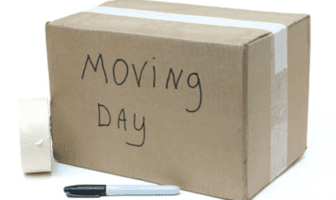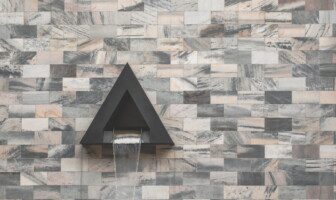
Your roof holds a rather unique position in your home. In one respect, it’s like a shield, as it provides the first line of defence against harsh weather and the dirt and debris that could result from this. However, in another respect, your roof is a precious gem; risk it incurring damage and you could really regret it.
It doesn’t help that the top of your roof isn’t something of which you could casually catch sight daily, or at least not from a short distance. If you want to properly inspect your roof’s cleanliness, you will need to go to special effort to do that, as well as arrange to clean the roof if it turns out to be dirty.
However, a roof often being ‘out of sight, out of mind’ doesn’t make cleaning it from time to time unimportant. Furthermore, by utilising particular cleaning methods detailed in this article, you can keep your roof tidier for longer as well as more effectively keep yourself safe.
Why it’s Important to Clean your Roof:
1. Clean your guttering:
Your home’s gutters serve one simple purpose: to direct rainwater off the roof and directly down the drain. However, it can also be so easy to overlook your gutters that you might not even notice an issue with them until after your home has suffered damp or structural damage.
Yes, either can result from neglected gutters – as if they are left to clog up, they could subsequently break, insurance giant AXA explains. Your gutters and their downpipes could become blocked if such debris as leaves, moss and – shudder – dead animals accumulate in those openings.
HouseLogic.com advises that you clean your gutters every autumn and spring. The job can take just a few hours at a time provided that you can comfortably work on a ladder, but calling in professionals to carry out the work instead could be the easiest way to leave those gutters pleasantly clean.
2. Don’t leave those leaves:
We’ve already mentioned leaves, but it’s not just in gutters where they can end up. While we will acknowledge that your roof is probably bereft of leaves if it has a simple peak and is surrounded by low landscaping, not all roofs can escape troublesome leaves quite so easily.
If your roof has a more complex design, leaves might have piled up in its valleys or near chimneys – especially if trees tower close to the roof. Failing to remove those leaves would risk them trapping moisture before, as they decompose, releasing it onto your roof.
Weeds could even grow on roof areas moistened in this way – but if we’re looking at a low-slope roof on a one-storey house, pulling those leaves down might not prove too difficult. A soft car-washing brush on a telescoping pole could suffice for the job.
3. How to remove black algae stains:
If certain slopes of your roof are often in the shade, they could increasingly pick up peculiar stains that the shade could ironically prevent you from easily noticing. What “peculiar stains”? We are referring here to black stains caused by a form of algae.
Such algae develop by feeding off minerals in particular types of shingles. You can rest assured that if your roof has algae stains, this isn’t any sign of damage to the roof’s functionality. However, those dark streaks can still look very unsightly, so you should take heart in the fact that you can actually get rid of them.
You can do that by dampening the roof using a pump sprayer, with a solution comprising one part bleach and two parts water. If you’ve got a soft window-washing brush, you are advised to mount it on a telescoping extension pole before using the brush to gently scrub the stained surface, as This Old House explains.
For your safety, you should tackle algae stains from either a ladder or the ground; don’t climb onto the roof.
4. Beware a mass of moss:
Like black algae, moss can develop on a roof. However, unlike black algae, moss threatens damage to a roof – and for this reason, must be removed from it. If visible moss seems to have only recently started developing on your roof, you might be able to simply sweep it off.
However, if it has significantly built up, it may be necessary to kill it first. You can do that by using products derived from potassium salts of fatty acids. However, you should be careful to limit the soap’s application to where moss is developing, and consider having zinc strips put in place afterwards.
Once these strips are in place close to the top of the roof, future moss growth will be inhibited due to how zinc runs off from the strips. Nonetheless, this runoff could harm aquatic life in a stream or lake should either be close to your house, so you should think carefully before opting for zinc strips.
5. Trim overhanging branches:
Towering trees have a lot to answer for when near a house, don’t they? Not only can these trees lead pesky leaves to fall onto your roof or into your gutters, but they can also give such rodents as squirrels an easy way to get onto your roof, where those pests could gnaw on the roofing material and siding.
A good rule of thumb is to keep branches 10 feet away from the roof. If that distance isn’t practically possibile, you could instead use a sheet-metal bank to wrap the tree trunk and so stop those pests in their tracks if they ever attempt to ascend the tree.
However, if branches overhanging a roof do need trimming, you should leave that job to a professional. If you attempt the task yourself, you could too easily cause otherwise avoidable damage.
6. Dislodge snow to prevent ice dams from forming:
During particularly frosty weather, it would be wise to try to avoid leaving snow resting on your roof for too long. Otherwise, such snow could form ice dams that lead your roof to leak.
However, it bears emphasis that you should remove snow while it is still that: snow. With a roof rake attached to a telescoping pole, you could dislodge snow within two to four feet of your gutters. If you can, do it from the ground; if a ladder is necessary, work at an angle.
Otherwise, falling snow could push you over. Another risk would arise if you were to attempt to pry off already-formed ice: the risk of damaging the roof. If you do cause such damage, you could arrange for roofing professionals to repair it – but of course, prevention is better than cure…
Let’s assume that you live in the County Durham area of North East England. If the roof is already damaged, Durham roofing contractors from a local firm could help. However, that firm might also be able to fit loft insulation to help to reduce the chances of ice dams happening in the first place.
7. What if you have egg on your face – or your asphalt roof?
We won’t share tips on how to overcome public humiliation, but if it’s on your asphalt roof where the egg has landed and dried, you could clean the problem area by soaking it with water, applying a non-toxic, biodegradable cleaning solution and scrubbing with a soft-bristle brush. However, this strategy will also turn the roof surface slippery, so you should be very careful.
Read Also:
- When to Consider Waterproofing Inspection?
- Which are the things consider when choosing Roof materials?
- 10 Tips to Help Sell Your House Faster
- Common Mistakes to Avoid When You Choose Roof Restoration Services




























